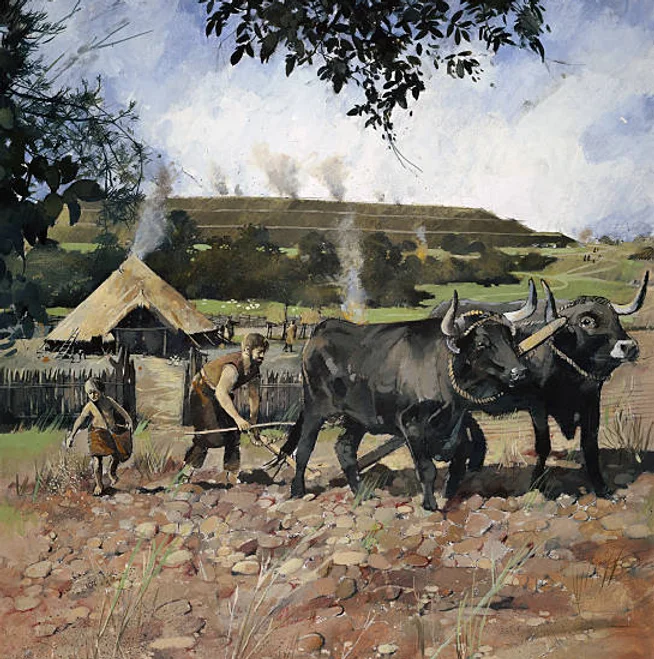‘A Garden’s Foundation’
How to Create Your Own Compost
I want to begin my latest volume of Garden Design for Everyone with my thoughts of creating and managing a garden compost,
with my first chapter devoted to “Getting your Soil Right” I would like to begin with understanding how to make garden compost.
In 2007 I wrote in Your Sustainable Garden, a chapter on soils I called “Your Garden’s Engine Room”.
Garden soils will be critical to developing a garden, again I devote a chapter on establishing a garden compost in Garden Design for Everyone Volume 3.
In our modern society, its soil resources are being overexploited all through our agricultural horticultural and gardening industry.
- Since the stone age, man has learnt to grow crops and cultivate soils during the middle ages, the three field system was created, food crops were grown on rotation, that included a fallow field, allowing a field to rest from cropping.
- Today with monoculture crops under cultivation soil structures and textures are on the verge of collapse and in desperate need of organic management.
- As society moves throughout the 2020’s there will be more emphasis on recycling of organic garden waste and domestic kitchen waste.
Domestic and community gardens
- On a domestic scale I suggest building community composts. This could be done by a small number of gardeners getting together, (preferably in one garden) to supply raw materials to make up an open air compost of 3-4 large wooden open bins, or an enclosed compost bin.
- To establish a compost, material such as cardboard, straw, lawn clippings, pea straw, leaf mould, paper, green weeds, are added in layers.
- It is the balance of the Nitrogen (green waste) Carbon (brown waste) the two elements that will the heat and encourage the micro- organisms and earthworms to the compost.
- Water, too must be added regularly, without rain I like to add water each time bulk raw materials are added.
Garden Position (sunny garden area)
- Sunlight is important, the sun’s rays encourage heat to form within the raw material, particularly with the open air method, your compost too will need turning each day.
- By ‘regular turning’ you will be able to see how the compost is breaking down.
Fertilizer: Blood and bone and lime.
- With the addition of steady supply of organic material, mixed with regular dressings of lime, blood and bone and water, (particular after kitchen scraps) lime will neutralize acidity and blood and bone will assist with the build- up of heat.
What type of compost to choose:
- The bin, or open air method? Personally I prefer the open air method, to that of the enclosed bin.
To create and manage a successful compost, a few key points must not be underestimated.
- Direct sunlight.
- ‘Visible inspection’ this is vital to see how your compost is progressing.
- Extra water.
- A continuous supply of green and brown raw materials.
As I turn my compost I notice micro- organisms and earth worms throughout the compost and I see if any more raw material is necessary, particularly lawn clippings.
Your compost needs a steady constant supply of raw and diverse vegetative material matter.
Green Garden Weeds, (Note 1)
Lawn Clippings;
Leaf Material;
Kitchen Scraps;
Pea Straw;
Small Branches;
Twigs;
Paper;
Coffee Grounds;
(Note 1.) I do not recommend adding couch grass, or bulbous root system weeds
To Summarise
First and Foremost
Sunlight
- Whatever style of compost pile you are creating, open air, or in a bin.
- Sunlight will be vital for the success of your composting, assisting in microbe activity, and the breakdown of kitchen scraps, and other diverse organic matter.
- Daily : Turn a section of the compost and add water (if the weather is dry).
- Weekly: Add a handful of blood and bone to the raw material, these additions will assist in the breakdown of your raw material.
Adding Kitchen scraps
Kitchen scraps from a bucket are able to be added to your compost (digging a hole, and emptying the bucket), add a small handful of lime during this process, to neutralize any excessive acid, from the kitchen scraps.
Worms
The worms will naturally come into the compost as the warmth comes. Your compost will become full of diverse material, over a period of time this will create heat.
Adding Fertilizer: Blood and bone and lime.
With the addition of steady supply of organic material,
To build your compost in the open air use large branches and twigs at ground level, then with a continuous thin layer of diverse green and brown materials.
- Ensure water is added in dry conditions.
- A compost bin needs inspecting every day, add also small amounts of green and brown material, and water to keep up moisture constant.
- Heat will be generated naturally, with constant turning and adding of the correct diverse material.
- It will be the heat that will break down the raw material and kitchen scraps
- Adding compost to your garden soil is the best way to improve your own soil.








